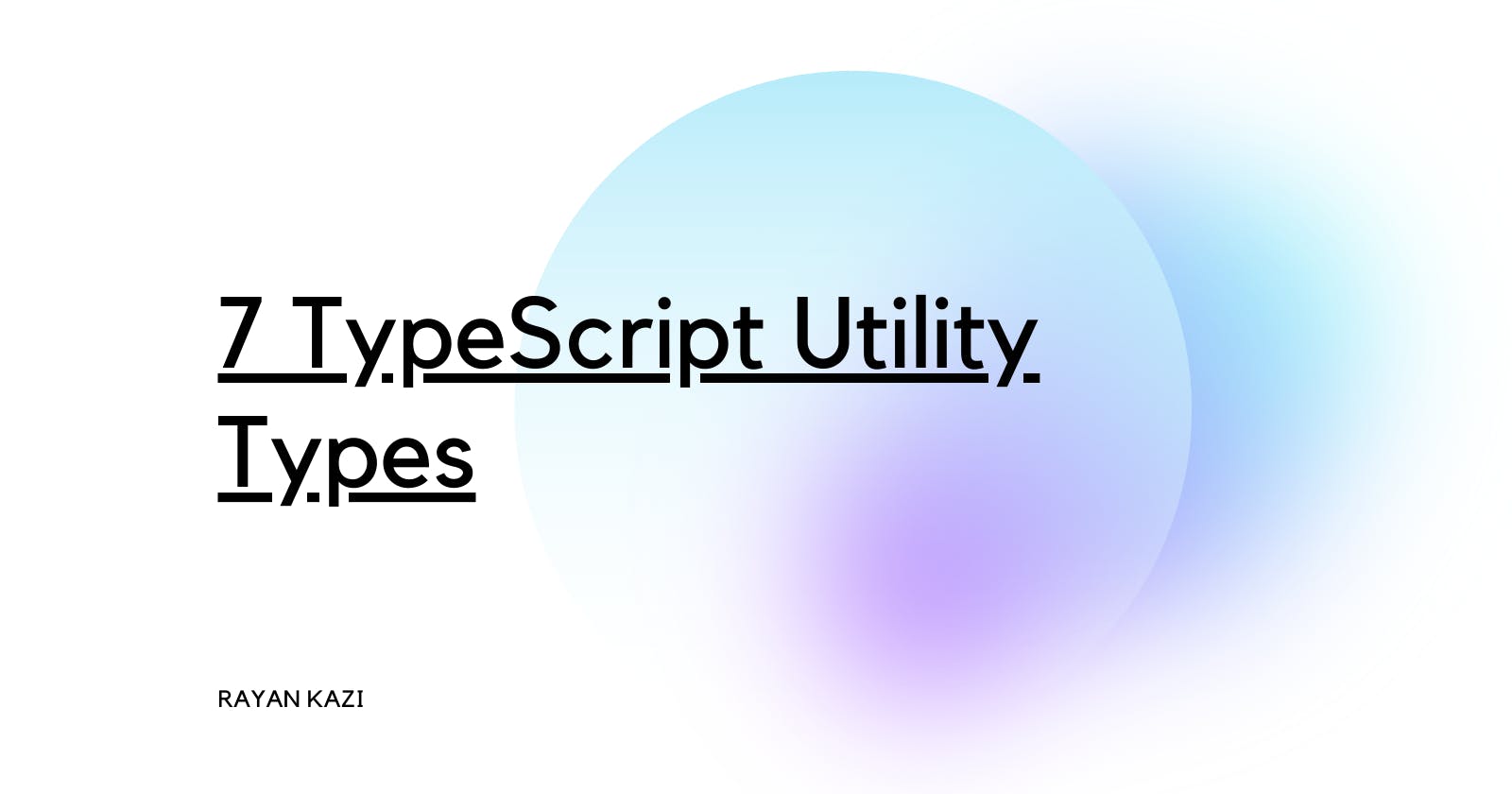TypeScript has arguably been the greatest thing that I have ever come across as a developer because of the way it revolutionized my experience as a developer. I want to help make using TypeScript even better for you by showing you how to use 7 built in utility types that will make your life much easier.
I will be using the following interface throughout the article to demonstrate the various types:
export interface Book {
name: string;
author: string;
datePublished: Date;
price: number;
numSales?: number;
seriesName?: string;
}
Omit and Pick
The Omit type allows you to "omit" (i.e. remove) certain properties from an interface and construct a new type out of it. The first argument it takes is the interface you want to remove properties from, and the second argument is a list of parameters.
For example, if you want to make a BookProfile type, which just has all the properties of the book needed to identify itself, you would use the Omit as follows:
type BookInfo = Omit<Book, "price" | "numSales">;
This type would be equivalent to our Book interface except it wouldn't have the price or numSales properties. You can also create it with the interface keyword as follows:
interface IBookInfo extends Omit<Book, "price" | "numSales"> {}
The IBookInfo interface would work the same way the BookInfo type would, but I personally prefer using the type version due to its cleaner implementation.
The Pick type has quite literally the opposite function of the Omit type; the Pick type allows you to "pick" certain properties of the interface that is passed in and construct a new type out of that.
If we were to make the BookInfo type using the Pick type, here is how it would look:
type BookInfo = Pick<
Book,
"name" | "author" | "datePublished" | "seriesName"
>;
Because these 2 types are so similar, an important question arises. "In which cases should I use Omit or Pick?" I think it actually comes down to personal preference.
If you were to add new properties to the Book type, it would automatically be added to the BookInfo type using Omit and cut off from the type using Pick, so it really depends on the scenario.
Generally, if you have a bunch of properties you need to remove, or if you need to remove more properties than you need to use, I'd use the Pick type; otherwise, I'd use Omit.
Partial and Required
Just like Omit and Pick, Partial, and Required are also related in terms of functionality.
In our Book interface, there are 4 required properties and 2 optional properties.
The Partial type will make all the properties on the interface passed in optional; this means that all 6 properties on the Book interface would become required.
type BookPartial = Partial<Book>;
The Required type does the exact opposite of what Partial does; it makes all the properties on the interface passed in required. This would make all 6 properties on Book required.
type BookRequired = Required<Book>;
These types are usually extended to include some exceptions. For example, we could make the name property required on the BookPartial type by extending it as follows:
type BookPartial = Partial<Book> & { name: string };
Record
The Record type allows you to create an object where you can define the key and the type. Lets say we had the following object below:
const myObj = {
a: 1,
b: 2,
};
This object follows a strict pattern where every key is a string and every value is a number. We can type this object using the Record type as follows:
const myObj: Record<string, number> = {
a: 1,
b: 2,
};
All the Record type does is say what the types are for the key-value pair of an object. If you want to represent a shelf with different books (with the Book interface), you can now easily do that with Record as follows:
const shelf: Record<number, Book> = {
0: {
name: "Into Thin Air",
author: "Jon Krakauer",
datePublished: new Date(1997, 1),
price: 14,
},
1: {
name: "1984",
author: "George Orwell",
datePublished: new Date(1949, 6),
price: 12,
},
};
Parameters and ReturnType
The Parameters type creates an array type based on a function's arguments. For example, let's say we had the following function:
function createPost(caption: string, image?: string) {
return { caption, image };
}
If you wanted to create a type that contained all the arguments of createPost, you would do it as follows:
type CreatePostInput = Parameters<typeof createPost>;
Here is how the type would be used in action:
const post: CreatePostInput = ["Nice", "https://bit.ly/3OOiIaC"];
createPost(...post);
The reason why you have to use the spread operator with the post array is because the elements of the array correspond to the various arguments of the function; the array itself isn't a function argument.
The ReturnType creates a type based on what a function returns. The syntax is very similar to that of Parameters:
type CreatePostReturn = ReturnType<typeof createPost>;
This is equivalent to:
type CreatePostReturn = {
caption: string;
image: string | undefined;
};
If a function returns a promise, you can wrap the ReturnType around the Awaited utility type, which will effectively do the same thing the await keyword does. It will allow you to have access to the object's (that is wrapped in the Promise) properties again.
type CreatePostReturn = Awaited<ReturnType<typeof createPost>>;
Next Steps
Now that you have learned just how powerful some of these types are, I highly reccomend refactoring some of your old code to use these types or even implement these types in a new app your building!
Thank you for reading!
Signing off 👋
